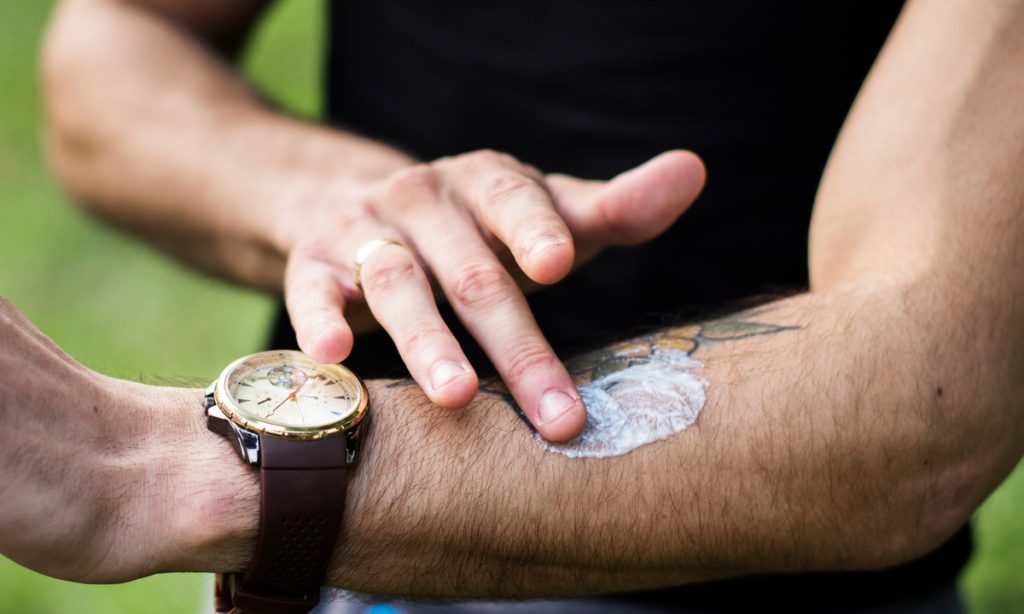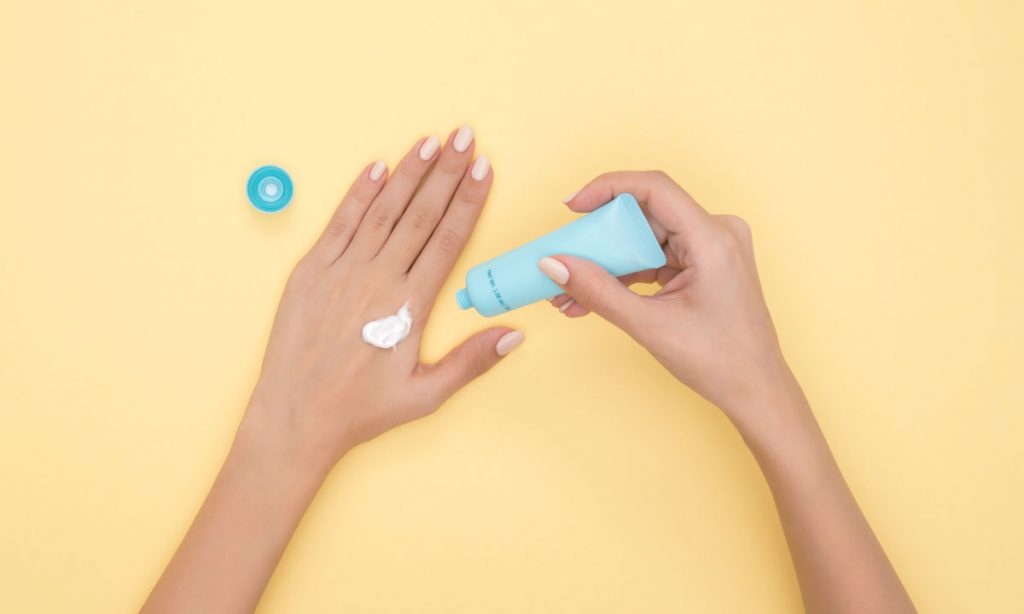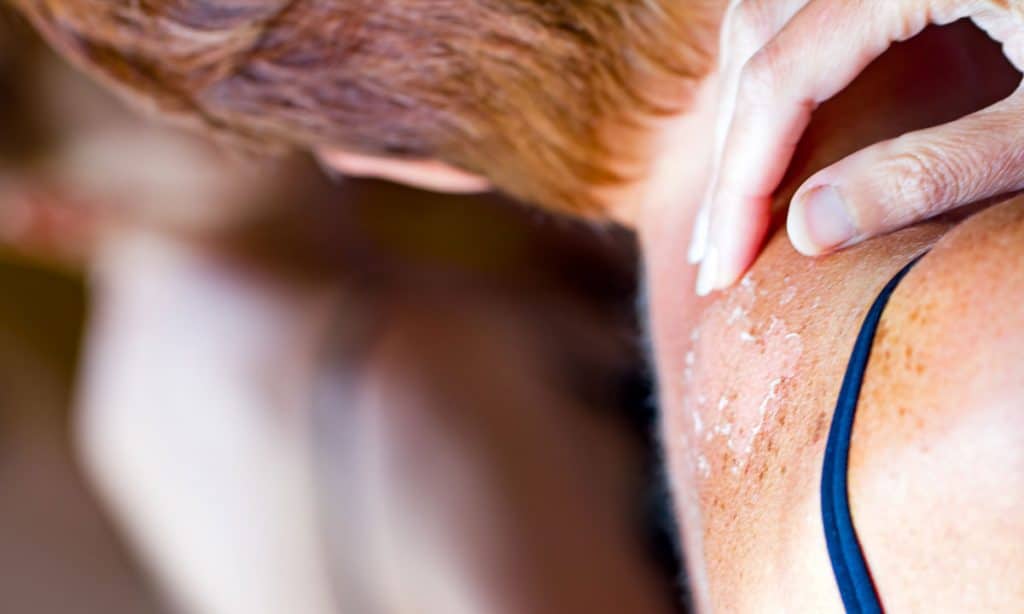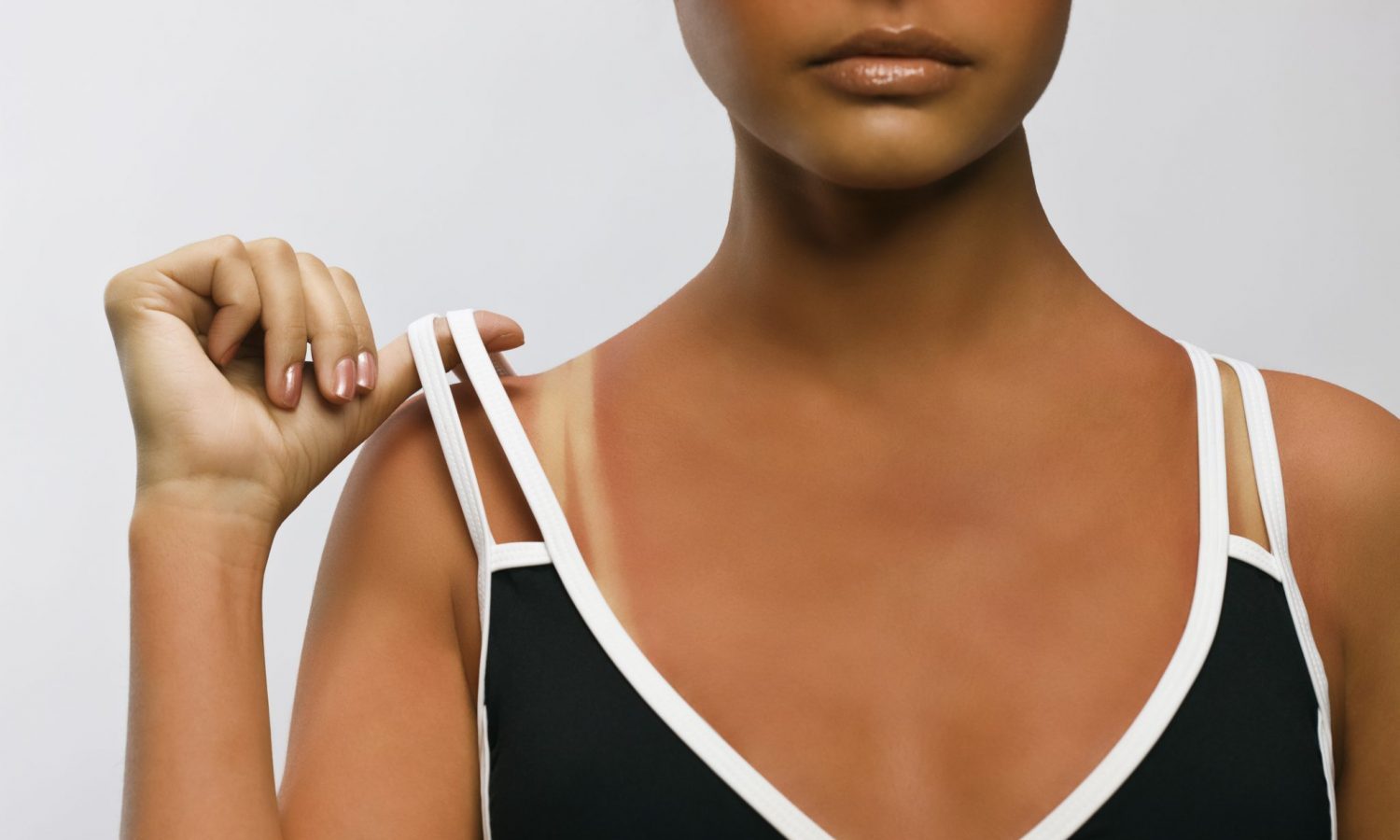When choosing a sunscreen, try to check the ingredients used and try to pick one with broad-spectrum protection that is capable of guarding against both types of UV rays.
It’s not unusual that many of us may not take enough precautions to protect our skin. While a few will make time to apply and reapply sunscreens, despite taking these precautions, they’ll sometimes still suffer from tortuous sunburns.
Around the world, aloe is commonly used to rectify the effects of sunburns, but this article will be exploring whether or not cannabidiol (CBD) products are a good option for treating sunburn.
Many of us, irrespective of skin tone or age, have experienced the inflammation and reddening of the skin after staying too long outside. Sunburn, thankfully, has several natural remedies, each needing a specific duration of time to yield results.

A breakdown of how sunburn works
The sun gives off ultraviolet (UV) rays and the skin has a limit on the number of UV rays it can tolerate. When this limit is reached, these rays begin to elicit or trigger an inflammatory response in the body. Some liken this inflammation to scalding themselves with something hot.
There are two types of UV rays: UVA and UVB. The first has a longer wavelength and can cause very intense damages like aging and cancerous growth, while the second has a shorter wavelength and is responsible for sunburns.
Fortunately, our skin can tolerate passive episodes of sunburn and with the right products, it can repair damaged cells. Care has to be taken to not overexpose the skin to more damage than it can tolerate.
The immune system and sunburn
Depending on the level of damage, sunburn can be classified as first, or second-degree burns. Medical practitioners claim that sunburn alone cannot cause third-degree burns.
Sunburn can only damage the outer and underlayer of the skin; that is the epidermis and dermis.
RELATED: The Summer Skinny On CBD Sunscreen
The immune system works immediately to correct the damages done as soon as the skin is no longer exposed to these harmful rays. Several symptoms will be noticed a few hours after the exposure.
Some of these symptoms include;
- Redness
- Pain
- Nausea
- Cold
- Peeling skin
- Fever
- Weakness
- Faints
- Low blood pressure
Patients often explain that they can spend several hours in the sun without feeling anything, only to get home and start experiencing these symptoms.
CBD and sunburn
Studies have shown that CBD has an anti-inflammatory quality. It has been used to treat conditions like muscle pain in rheumatoid arthritis and neuropathic pain. It has also been useful in patients with psoriasis and acne.

This is why researchers think CBD would be a good option for the prevention or aftercare of sunburns.
Board-certified dermatologist and brand ambassador for Medterra CBD, Dr. Jeanette Jacknin, claims CBD has a high potential to make the skin heal from sun damage. She based her claims on studies that show the hearing effects of CBD on wounds.
RELATED: Your SPF Moisturizer Is Not As Effective As Sunscreen, Says Study
Although there is still a need for more research, it has been suggested that CBD can be mixed into existing sunburn precautions, such as sunscreen.
Accordingly, CBD compounds have been extracted and infused into lotions for their anti-inflammatory magic effects.
CBD lotion
Presently, preclinical research is being carried out to look into the effects of CBD on not only sunburns, but on other dermatological inflammatory diseases. But, science has established that our skin is a complex ecosystem that is partially modulated by the existing endocannabinoid system.
Yep! You have cannabinoid receptors spread across your skin which react uniquely with CBD.
CBD compound may influence how the user feels and thinks, as a result, it minimizes the symptoms perceived by the user.

Most of these benefits are still not clearly defined, but some benefits that have justified its use as a major ingredient in skincare lotions include:
- Inability to get the user high.
- Very low level of toxicity.
- May soothe irritated skin.
- Reduce the rate of skin aging.
- Works well with other ingredients.
- Promotes a well-balanced immune reaction.
Applying CBD products to sunburn
Topical creams and lotions that have been infused with CBD compounds are effective for localized effects. These lotions are directly applied to the affected areas, and results can be observed a few hours after it has been used.
First-time users are always advised to apply a very small amount to unaffected parts of the skin to observe reactions. In addition to CBD lotions, CBD tinctures, capsules, vapes and oils can be ingested.
RELATED: 5 Ways Cannabis Can Help With Common Summertime Ailments
The oral consumption of CBD may help tackle the psychological effects of sunburn, especially when the physical symptoms have been successfully managed.

The lack of toxicity in CBD compounds makes it easy to experiment with different approaches and, thus, the best method of use can be adopted. For example, the method best suited for you may be the direct application of CBD cream and the consumption of some drops of CBD oil under the tongue.
You can’t know until you try.
Is CBD the best way to treat sunburn?
Each person has a different genetic makeup, and the amount of sunburn that can damage your skin cells beyond repair may differ from mine. Hence, prevention is the best method of treating sunburn.
When choosing a sunscreen, either containing CBD or not, try to check the ingredients used and try to pick one with broad-spectrum protection that is capable of guarding against both types of UV rays.
Remember that the sun doesn’t have to shine that much for your skin to burn; most UV rays can penetrate the clouds and get to you quick!
Basic skincare for sunburn includes:
- Keep skin moisturized
- Stay in a cool place
- Reduce inflammatory products
- Drink water
Finally
If you’ve tried all you can and symptoms persist, contact your doctor ASAP.
With more research, the viable therapeutic benefits of CBD regarding sunburn will be discovered and used to create better lotions for quick relief of patients.
This article originally appeared on Cannabis.net and has been reposted with permission.


